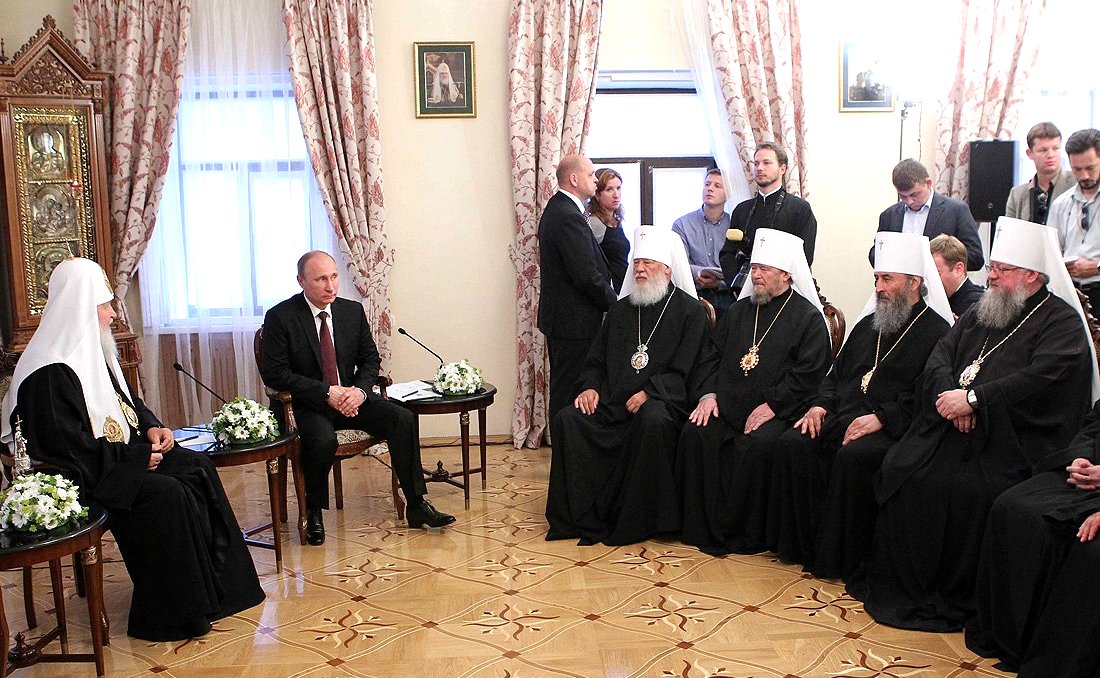Tucker Carlson accuses Ukraine and its government of religious persecution against its own Orthodox citizens. This not only reveals an utter ignorance of the country's religious sphere but also disregards the intrinsic links between the Ukrainian Orthodox Church of the Moscow Patriarchate and Russia, an aggressor state which currently carries out a genocidal war against Ukraine.
Since 2022, now-former Fox News host Tucker Carlson has branded Ukraine’s President Volodymyr Zelensky as a “persecutor of Christians.”
In an apparent attempt to pander to the religious sensibilities of his conservative audience, the right-wing pundit either displayed utter ignorance of Ukraine’s religious sphere or exploited the Americans' relative unawareness of the topic.
As part of his rhetorical offensive against Ukraine’s president, Carlson said Zelensky wants to “ban an entire religion – the Ukrainian Orthodox Church,” raids temples “for no justifiable reason,” and targets those clergymen that are not loyal to Zelensky's "regime.”
The Ukrainian Orthodox Church - Moscow Patriarchate (UOC-MP) is not a religion, but a church, one with historical institutional ties to the Russian Orthodox Church, which is, in turn, closely tied to the Kremlin.
UOC-MP exists parallel to the Orthodox Church of Ukraine (OCU), which is an autonomous (autocephalous) church, independent of Moscow. Adherents of both ecclesiastic bodies describe themselves as Orthodox Christians.
Followers of the OCU, predominant in Ukraine, are not persecuted by the government for their religious beliefs. Neither, actually, are followers of the UOC-MP: the state cares not for their religion, Orthodox Christianity. But it does about the ideological support of some of them for the aggressor state, Russia, that masquerades as religion.
It is untrue that Ukraine’s authorities began to target the UOC-MP without apparent reason. Moscow Patriarchate clergy members have shown support to agents of Russian aggression already since 2014. Nevertheless, Zelensky, unlike his predecessor Petro Poroshenko, initially took a back seat in church politics after taking office in 2019.
It was only in 2022, as Russia’s full-scale invasion presented the greatest existential threat in the history of restored Ukraine, and as many UOC-MP clergy members yet again showed sympathies and even actively aided the aggressor, did the state begin to intervene. Subsequent searches of the UOC-MP’s premises uncovered pro-Russian propaganda, Russian passports, and chauvinistic literature.
Finally, unlike Ukraine, Russia does indeed conduct persecution against Christian minorities based on their denomination, both at home and in Ukraine. Human Rights Watch has repeatedly criticized Moscow’s long-lasting attacks against the Jehovah’s Witnesses, and locals in the occupied Donbas have testified about targeted attacks against Protestants, Catholics, and followers of the OUC.
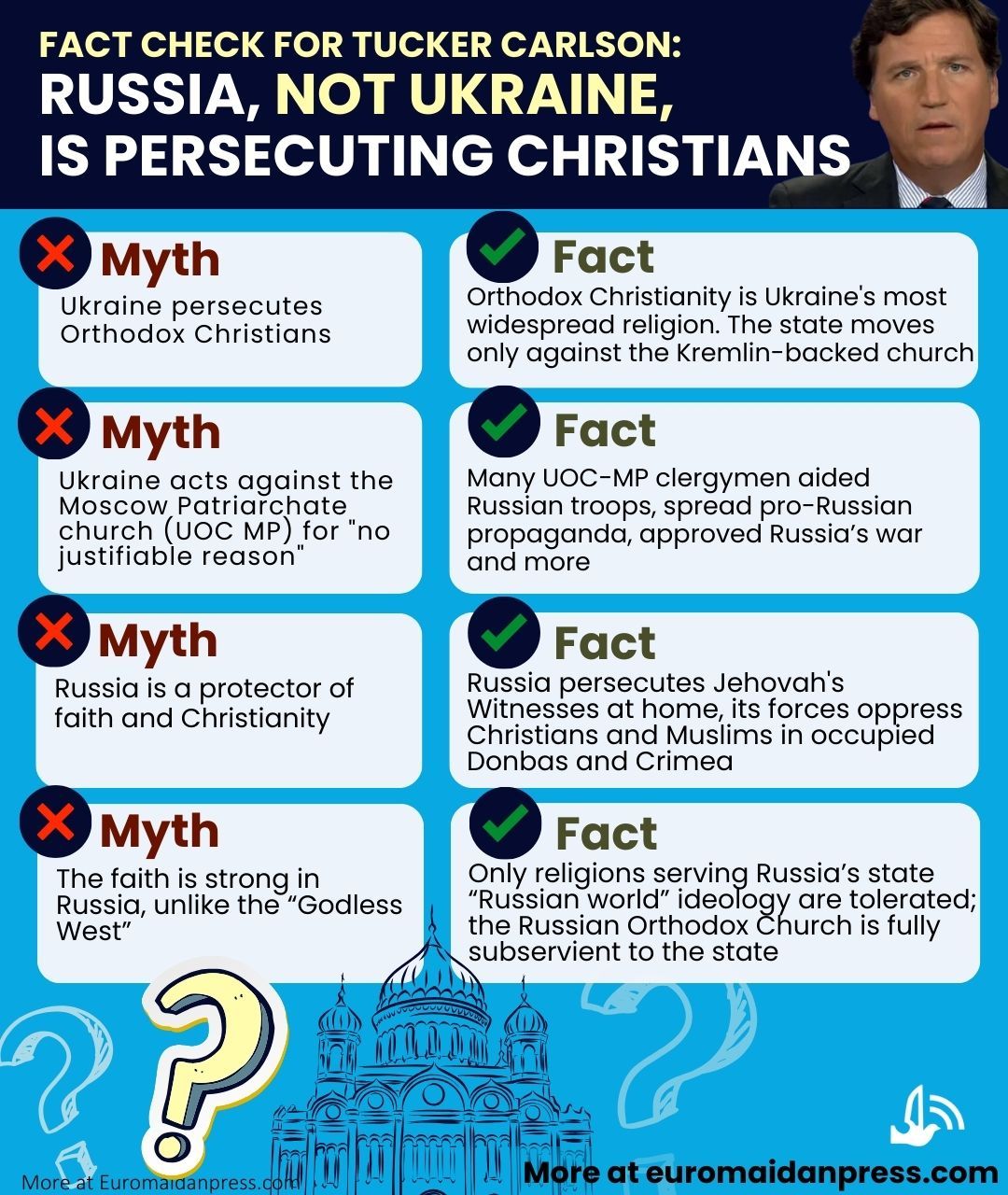
Religions of Ukraine
Like in the United States, Ukraine’s Christianity is far from a monolith. Orthodox Christians represent the largest denomination, with Catholics coming in second – but even they are further divided into different churches.
Kyiv has been a historical home to the Metropolitan of Kyiv and all Rus, the most senior ecclesial authority in the medieval Kyiv Rus principality. However, as the late Middle Ages saw a shift of the political center to Moscow, Rus metropolitans made the city their seat as well. As Moscow hosted metropolitans – and since 1589, patriarchs – the ecclesiastical and political spheres of the nascent power became tightly intertwined.
The Orthodox religion and the Moscow Patriarchy became one of the pillars of the Tsar’s rule at home. Orthodoxy also provided justification for the westward expansion into the territories of modern-day Belarus and Ukraine. Muscovy tsars claimed the right to “liberate” their Orthodox brethren from the heretic oppression of Polish Catholic monarchs who ruled these lands in the early modern era.
The political grasp of Moscow rulers over the Church grew ever tighter over the centuries. Even as the Bolsheviks came to power, after initial strict anti-religious campaigns, the Soviet Union soon recognized that a closely controlled church is a useful tool.
The Church continued to exist but was closely supervised by the state and infiltrated by secret police. The current Moscow Patriarch Kirill (Vladimir Gyuandaev) was himself was an KGB agent.
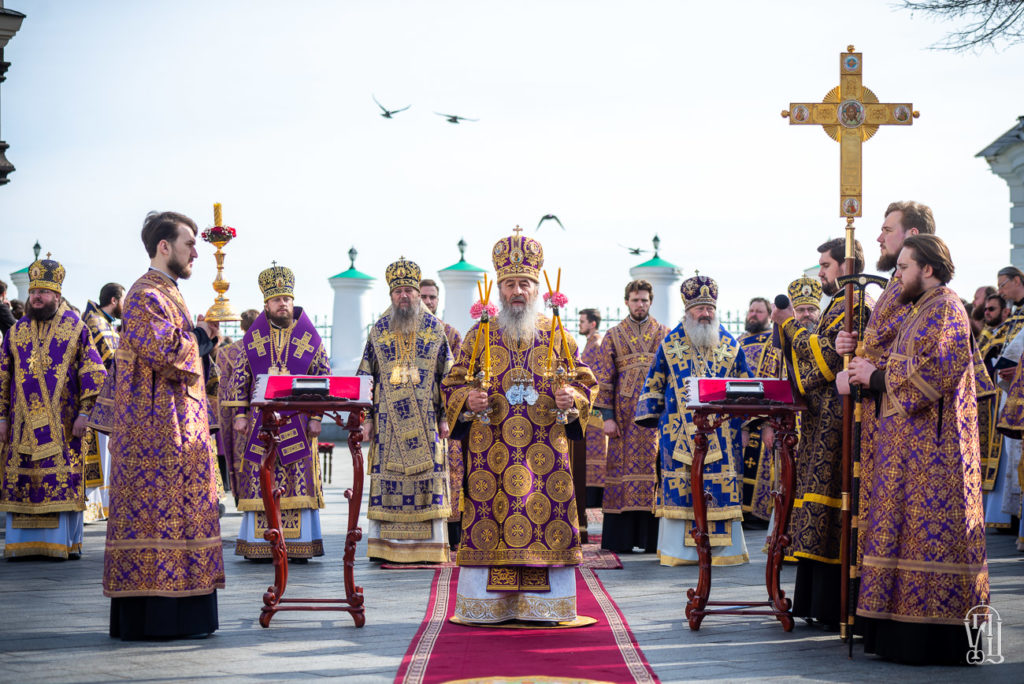
The modern-day Ukrainian Orthodox Church - Moscow Patriarchate (UOC-MP) was transformed from the Ukrainian Exarchate of the Russian Orthodox Church (ROC) into a “self-governing” (but not autonomous) church under the jurisdiction of the Moscow Patriarchate in 1990.
In the first years of Ukraine’s independence after the break up of the Soviet Union, the UOC-MP was enjoying its heyday, having a virtual monopoly on the religious life in the country, according to religious expert Tetiana Derkatch.
After Russia’s full-scale invasion of Ukraine in February 2022, the UOC-MP publicly distanced itself from Moscow, rejecting the “Moscow Patriarchy” label and declaring independence. This step continues to be disputed by both Moscow and Constantinople patriarchs, and the behind-the-door activities of the UOC-MP’s clergy suggest the move has not been fully honest.
In the face of Moscow’s religious dominance, Ukrainian faithful have long sought to establish their religious independence, along with the political one. In 1921, Ukrainian clergy founded the Ukrainian Autocephalous Orthodox Church, reflecting the national and cultural revival undergoing in the country. The young church, however, experienced heavy repressions by the Soviets, being effectively forced into illegality under Stalin’s reign.
The post-1991 saw yet another attempt at Ukrainian religious revival, the Ukrainian Orthodox Church – Kyiv Patriarchate. It, however, failed to win recognition from other Eastern Orthodox Churches.
The Euromaidan Revolution provided a new impetus for independence from Russia’s hegemony in all spheres. With the support of President Petro Poroshenko and Ecumenical Patriarch Bartholomew, the Ukrainian Autocephalous Orthodox Church, the Kyiv Patriarchate, and select parishes of the UOC-MP merged into the Orthodox Church of Ukraine (OCU) in December 2018. The new body was granted a tomos of autocephaly (ecclesial independence) by its Mother Church, the Ecumenical Patriarchate, a month later.

Some of the UOC-MP parishes then began switching to the new church, but the process was a slow one. Unlike Poroshenko, President Volodymyr Zelensky who came into office in 2019 took a reserved stance toward religious issues at first, at least until the full-scale Russian invasion of Ukraine.
It is worth remembering that Ukraine is not home only to Orthodox Christians either.
The Ukrainian Greek Catholic Church (UGCC) traces its roots to the Union of Brest in 1596. The Eastern Slavic subjects of the Catholic Polish kings agreed to formally recognize the Pope’s authority but continued to adhere to the Eastern Rite. UGCC is the second largest Catholic church in the world after the (Latin) Roman Catholic Church.
There are also minorities of Roman Catholics, Protestants, as well as Jewish, Muslim, and other communities.
A survey from last year showed that by July 2022, 54% of Ukrainians are followers of the OCU (compared to 34% in 2020), while only 4% identify themselves as followers of the UOC-MP (compared to 15% two years prior).
There are also 14% who see themselves as Orthodox Christians without further specification, 8% of Greek Catholics, 2% of Protestants, and 1% of Roman Catholics.
Moscow’s shadow over the Ukrainian church
Despite efforts for religious independence in restored Ukraine, the pre-Euromaidan Revolution era was the period of domination of the UOC-MP.
The church had followers among the state authorities, who kept the clergy under their wing.
Senior members of the UOC-MP managed to accumulate large personal wealth. The Metropolitan of Kyiv-Pechersk Lavra Pavlo Lebid even earned the nickname “Pasha Mercedes” for his love of luxury cars.
It was the Euromaidan Revolution and the subsequent Russian occupation of Crimea and Donbas that became a turning point.
As Russian occupying forces were moving to Ukraine’s territory in Crimea and Donbas, they received shelter and support from many Moscow Patriarchate's clergymen.
Priests like Pavel Batarchukov in occupied Luhansk promoted Russian-backed militant groups, a Moscow Patriarchate Sviatohirsk Lavra in eastern Ukraine sheltered the fighters of the notorious war criminal Igor Girkin, and in Crimea, virtually all the UOC-MP clergy voiced support for the illegal occupation.
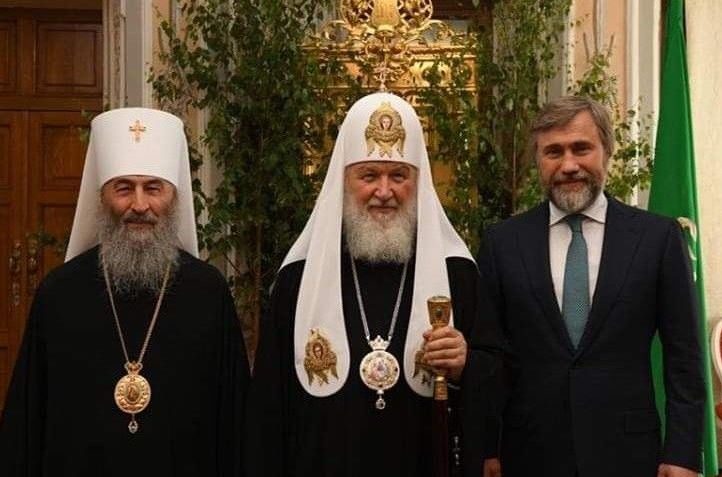
Russia’s full-scale invasion of Ukraine in 2022, conducted with the Moscow Patriarch’s blessing, convinced many of the UOC-MP’s parishioners and priests they cannot sit on the fences anymore. According to an opinion poll from April, 74% of Ukrainians wanted the church to cut its ties with Moscow, and 51% wanted it abolished.
After pressure from outside and its own believers, the UOC declared “full independence” from Moscow on May 27 and publicly denounced Russia’s aggression.
The church’s leaders also reiterated their objections
to the “Moscow Patriarchate” label, insisting they are simply the Ukrainian Orthodox Church based in Kyiv, not Moscow.
However, their "independence declaration" did not use the word “autocephaly,” which would be the correct term for ecclesial independence in the Orthodox world. The new “status” was not recognized by patriarchs in Moscow and Constantinople. As far as they were concerned, the UOC remains under Moscow’s jurisdiction.
The declaration did not involve any changes in the Holy Synod, the church’s governing body, which retained many pro-Kremlin figures. The rival Orthodox Church of Ukraine called the change a mere “window dressing.”
The move was also not recognized by many priests on the occupied territories who refused the break from Moscow.
Ukraine's security services soon learned that the UOC-MP's priests openly praise Russia amid the ongoing invasion and the churchgoers sing songs praising the "Russian World."
As the suspicions grew, in the fall of 2022, the Security Service of Ukraine (SBU) launched a series of raids in the UOC-MP's facilities, including Pecherska Lavra in Kyiv, discovering Russian propaganda materials, xenophobic literature, large amounts of cash, and Russian passports.
A later investigation by Ukrainska Pravda revealed that over 20 of the church’s members, including its most senior representative Metropolitan Onufriy, hold Russian passports.
It also uncovered that the UOC-MP members were distributing pro-Russian propaganda materials shortly after the start of the full-scale invasion.
A wiretapped conversation involving Metropolitan Pavlo recorded him approving the occupation of Kherson, denouncing the Ukrainian military, and calling for prayers for Moscow Patriarch Kirill amid the ongoing invasion. The Moscow Patriarch has actively supported the war of aggression against Ukraine, telling Russian believers that dying on Ukraine's battlefields will "wash away all sins."
Following the SBU's discoveries, in December 2022, President Volodymyr Zelensky backed a proposal for the parliament to ban the Kremlin-affiliated church. The move has not yet passed the legislative body, however.
Local councils in several western oblasts including Zakarpattia, Volyn, and Rivne voted to prohibit the UOC-MPs activities in their regions.
In Kyiv, the government decided not to prolong the lease of Pecherska Lavra and return it to the state’s ownership. The UOC-MP’s clergy, however, continue to block access and refuse to vacate the monastery.
The monastery’s head, Metropolitan Pavlo, was in the meantime charged with inciting religious hatred and supporting Russian aggression and put under house arrest.
Faced with the existential threat of the invasion, the Ukrainian government stepped in against what it saw as a soft-power tool of the Kremlin. It also put increasingly more support behind the OCU, seeing it as a foreign influence-free alternative to the UOC-MP.
The steps against the Moscow Patriarchate church were not guided by religious reasons. The state did not move against Orthodoxy or Christianity, as evidenced by its simultaneous support for the OCU.
Its target was an institution historically connected to the Russian Orthodox Church, many of whose members proved time and again that their sympathies lie with the aggressor state.
The Russian World
Russia wages war against Ukraine not only through guns and bombs. Its invasion has an ideological component as well.
The ideology of the “Russian World,” developed in the Russian Federation after the death of the atrophied Soviet communist doctrine, imagines a historically-rooted sacred civilization space with Orthodoxy as its central pillar.
The Russian World serves not only as a semi-official state ideology at home; it also justifies “returning” the rest of the Orthodox flock, mainly the former lands of Rus, under Moscow’s guardianship.
This ideology rejects modernism and liberalism and puts "Orthodox, pious Russia" in contrast to the "godless, decadent West." Ukraine, by its strides towards EU and NATO membership and by upholding its own identity separate from Russia, is denounced as a "traitor" by the Russian World.
Under the prism of this ideology, Putin is returning a lost sheep to the flock through its aggression.
The UOC-MP, with historical and institutional links, has very much been an advocate of the idea that Ukraine and Russia belong to the same civilizational world.
Religious expert Tetiana Derkatch described the perspective of the UOC-MP toward the Russo-Ukrainian War as a civil war, a needless conflict between Orthodox brethren.
When both Ukrainians and Russians are connected by faith and history, why is there even a need for a separate state? And should that state not be the one truly devout to the legacy of Russian spirituality and holiness?
While discarding an overt adoration of the “Russian World” for a more subtle promotion of the “shared civilizational space” after 2014, many of the clergymen proved that Russia’s semi-official ideology is well and alive with them.
Many of the paramilitaries that were sheltered and supported by the UOC-MP were themselves adherents of the Russian World. Ultra-Orthodox pro-Russian Cossacks existed in Ukraine even before the start of the Russian aggression, working closely with the Moscow-affiliated church and based at the UOC-MP’s premises, such as St. Iona Monastery in Kyiv.
These militiamen flocked to the ranks of the so-called "people's republics" in Donetsk and Luhansk oblasts at the onset of the war.
The UOC-MP also turned to more subtle means, supporting pro-Russian public organizations or events promoting Russian culture and language, such as dedicated “days of Pushkin” or “days of Dostoevsky,” while sidelining Ukrainian culture.
Religious persecution in Russia and occupied territories
The sad paradox of this narrative is that if anyone brought religious persecution to Ukraine, including religiously-motivated killings, it was Russia.
In the occupied parts of Donbas, militants launched repressions against local Evangelical churches, as well as against Catholics and Ukrainian independent churches.
Likely the most well-known case took place in June 2014, when four members of the Pentecostal church were abducted by the Russian Orthodox Army, likely tortured, and then executed.
Under the new regime, Christian minorities were exposed to threats, abductions, beatings, kill lists, and confiscations that gradually forced the clergymen not loyal to Moscow’s branch of Orthodoxy to flee or go underground.
Once the Kremlin secured tighter control over the “people’s republics” by 2015, on the surface level, the situation stabilized somewhat, as religious bodies could re-register and “re-legitimize.”
In reality, non-Orthodox churches continued to experience confiscations in the occupied parts of Donetsk Oblast. In the occupied territories of Luhansk Oblast, the situation was even worse, as frequent raids by masked men forced religious conventions to go back underground “like in the Soviet times,” as local pastor Sergei Kosyak commented.
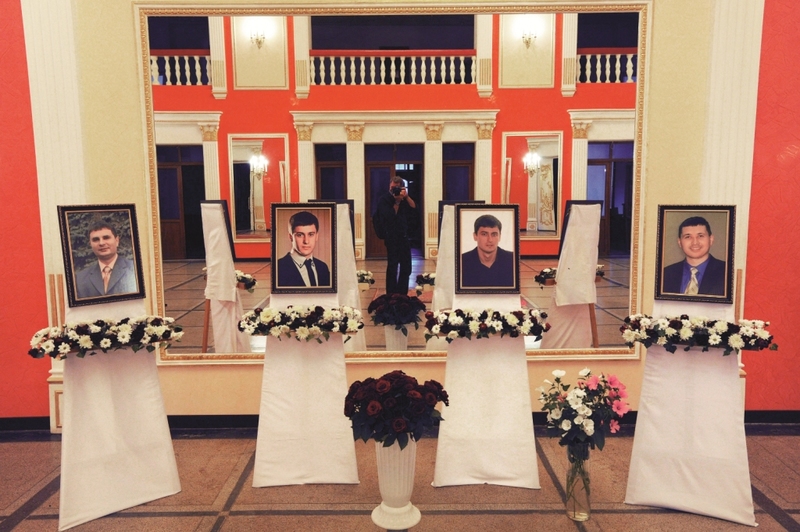
Religious persecution was not unique to the occupied Donbas. In Crimea, the Russian authorities targeted Muslim Crimean Tatars in an ominous repetition of the Stalin-era suppression of Crimea’s indigenous people in the 1940s.
Moscow particularly targets the Hizb ut-Tahrir group, a non-violent Islamist organization that is legal in Ukraine and most European countries but banned in Russia.
In practice, the Russian Federal Security Service (FSB) uses any hint of Hizb ut-Tahrir membership to trump up charges of extremism against peaceful residents. Russia’s judicial system regularly hands out high prison punishments to Crimean Tatars for acts like assembly or expression of belief or opinion.
According to Human Rights Watch, Russian law enforcement denies due process to the accused and uses electric shocks and beatings.
That is to say, Russia does not persecute Muslims as a whole, as long as they prove their loyalty to the Kremlin, vis-a-vis the current leadership in the federal republics of Chechnya and Dagestan.
Nevertheless, the arrival of religious persecution along with Russian boots is hard not to put into connection with the persecution taking place within Russia itself.
Jehovah’s Witnesses, again a wholly non-violent Christian group, have been labeled an extremist organization in 2017. The organization has suffered raids and arrests, while hundred of Witnesses have been charged with extremism and were detained or arrested. At least 100 members are currently imprisoned in Russia for their beliefs.
It is not the first time that Russia disseminates a certain narrative, directed at Western audiences and laundered by Western commentators, that is eerily similar to the Kremlin's own practice.
Just like with the accusations of fascists ruling in Ukraine, Moscow's propagandists hurl accusations against their enemies that are much better suited to describe Russia itself.
Related:
- Moscow-backed Ukrainian Orthodox Church leader, 20 other hierarchs are Russian citizens, media claims; church denies
- Anatomy of treason: how the Ukrainian Orthodox Church sold its soul to the “Russian world”
- Russian World: the heresy driving Putin's war
- Russian Orthodox Church shares responsibility for Russia’s aggression – Ecumenical Patriarch

